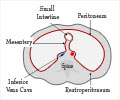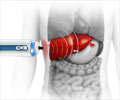New potential targets for the treatment of muscle diseases such as muscular dystrophy and fibrosis have been identified by researchers at the University of British Columbia.
New potential targets for the treatment of muscle diseases such as muscular dystrophy and fibrosis have been identified by researchers at the University of British Columbia.
Study's lead author Fabio Rossi and colleagues have identified fat-producing cells that possess 'dual-personalities'.They have found a new type of fibro/adipogenic progenitors, or FAPs, that generate fatty fibrous tissues when transplanted into damaged muscles in mice.
Progenitors are similar to stem cells in their capacity to differentiate, but are limited in the number of times they can divide.
"These cells are typically dormant in muscle tissues. Once activated by damage, they produce signals that coordinate tissue regeneration and then disappear. That's the Dr. Jekyll side of FAPs," Rossi said.
"In chronic muscle diseases such as muscular dystrophy, however, FAPs persist and may be contributing to over-production of scar tissues, resulting in fibrosis. That's the Mr. Hyde side," Rossi added.
The researchers said that better understanding of the role of FAPs could help encourage their healthy function or repress their negative impact.
Advertisement
The findings are published in the current issue of Nature Cell Biology.
Advertisement
RAS










